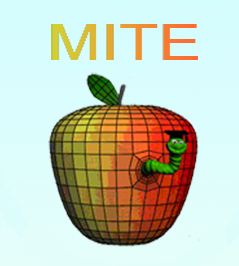According to the memoirs of academician N. N. Krasilnikov, the term “experimental mathematics” was said for the first time in 1969, when the Academy of Science of the USSR established their Ural Department. Nowadays, we can see different attitudes to this term. Some scientists think that the term is no more than a new brand (Mark McEvoy [16]). Others believe that it is a name of a new area of mathematics. For example, “A manifesto of experimental mathematics” was published in 2008 (see [17]) by a group consisting of specialists from the Russian Peoples Friendship University and the Institute of Oceanology named after P. P. Shirshov.
It is interesting that a boundary of experimental mathematics is rigidly determined in “A manifesto…” [17].Besides this Manifesto does not mention a usage of experimental methods in mathematics education. Meanwhile, in order to understand an evolution of the role of the experimental component of mathematics, it would be natural to join efforts of mathematicians and mathematics educators.
Previously we mentioned the usage of experimental mathematics in education, i.e., a phenomenon, which is new for didactics of mathematics. As usual, this phenomenon has supporters and opponents, enthusiasts and skeptics. Both sensible supporters and sincere skeptics realize that experimental mathematics has some substantial, though not immense, achievements. They realize that its usage in education is fruitful, but meets a number of difficulties. That is why we do believe that mathematicians and educators need a kind of a “soft manifesto”, i.e., a text, which is admitted by many specialists. Below we make an attempt to write such a text.
Manifesto
It is well known that mathematics, like any science, has a dual nature. On the one hand, it represents an activity of getting new knowledge in its specific field, and on the other hand, it is a sum of knowledge gained at a given moment. That is why in teaching mathematics at all levels, it is necessary that students and pupils should learn mathematical facts and master research skills in mathematics, and both must go on simultaneously and equally. In particular, the process of teaching should include mathematical experiments, because mathematics in the making was an experimental science, and it has retained both bases, theoretical and experimental.
The researcher’s activities with the objects of the material world or their ideal images will be assigned to the field of experimental mathematics, if its results are hypotheses about the properties of mathematical objects and/or mathematical pre-concepts or concepts.
Different nations had various tools of mathematical experiments at different times such as dice, playing cards and coins; square sheets of origami paper; a real pair of compasses, a real ruler, real papyrus and paper (later); an ideal ruler and an ideal compass; a protractor, a double-sided ruler and a stencil of the right angle; a computer, etc.
The computer plays a special role among the tools used in mathematical experiments. Its role in the experiments is so crucial; the obtained results are so interesting and varied, that we can speak about the emergence of experimental mathematics as a special field of mathematics and of the identification of the mathematical experiment with the computer experiment. Apparently, the words “emergence" and “identification” are kinds of hyperbole and in this sense are not accurate, but they reflect a new reality i.e. a sharp increase in the role of the experimental component of mathematics.
It should be mentioned that the mathematical experiments have been actively used in education. Digital educational resources give an opportunity to organize mathematical experiment in the process of teaching and learning. This fact has given rise to strong positive effects on the one hand, and has revealed serious risks, on the other hand.
Mathematicians and teachers of mathematics have a noble goal of learning how to use experimental methods for the development of mathematics and pedagogy of mathematics.
Full text of "Manifesto"


